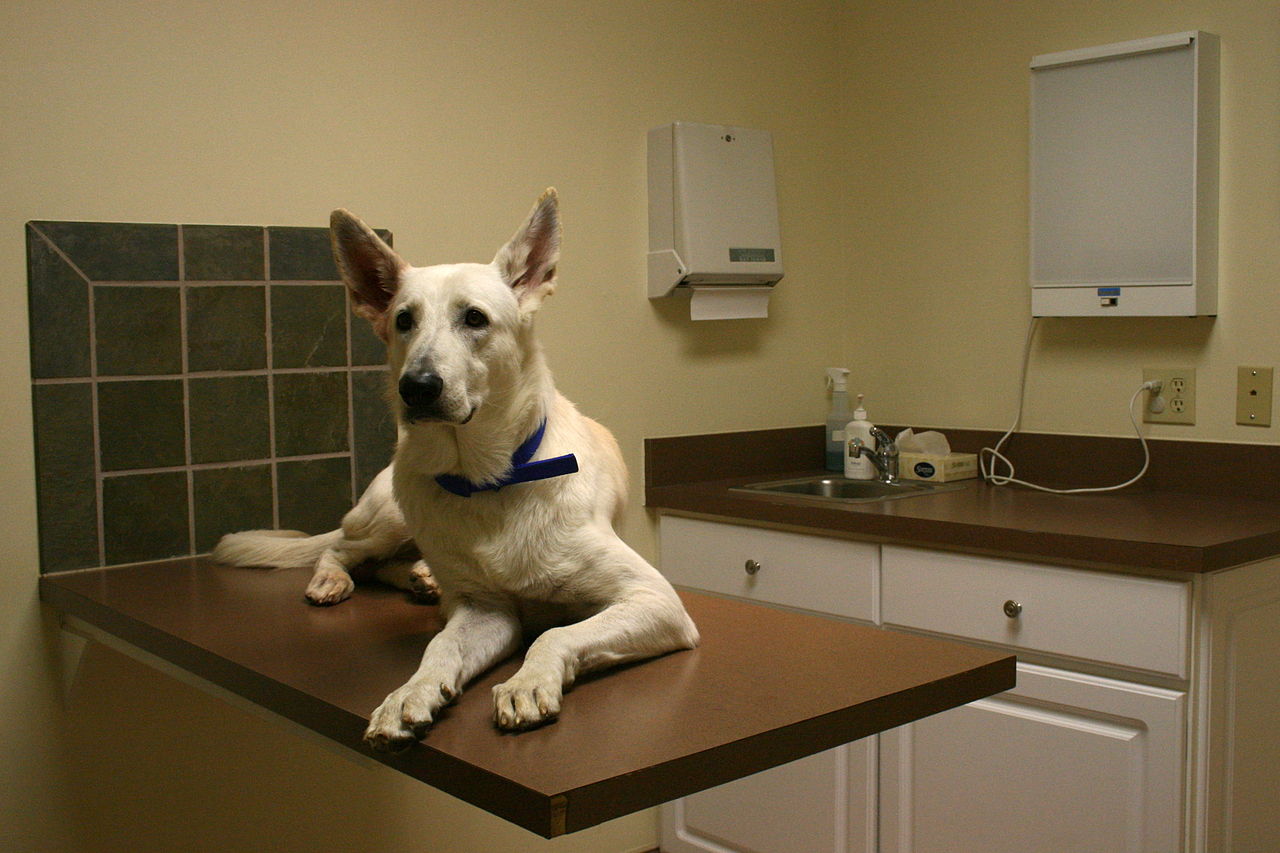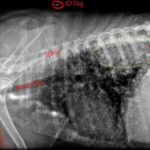A spinal cord stroke or infarction in medical terms is called a fibrocartiliginous embolism (FCE). It is a blockage of a blood vessel in the spinal cord. An FCE can occur in humans, pigs, dogs, cats and horses. The small bones of the vertebral column protects the spinal cord and are joined together by invertebral […]
Dog Diseases
There are a number of diseases dogs are prone to and I’ll talk about some of them here. I’ll also try to include specific breeds of dog that are prone to certain illnesses and diseases.
I would advise you to be aware of your dog’s normal behavior. Signs of illness can be lack of appetite, decreased activity, weakness, not drinking much, not grooming, bad breath, sleeping more than usual, drooling, vomiting, diarrhea, coughing, trouble breathing, frequent and/or bloody urination. If your dog exhibits any of these symptoms or any behavioral changes and you are unsure of what to do, seek the advice of your veterinarian.
Things you need to know:
The normal color of a dog’s gums is pink. Pale, white, blue or yellow gums, contact your vet at once.
Normal temperature for a dog is 100-102.5 degrees Fahrenheit. Less than 99 degrees or over 104 degrees, contact your vet immediately.
A dog’s heart rate slows and speeds with each breath. This is not abnormal. You can check the heart rate by finding the femoral artery inside the back leg. Small dogs and puppies heart rate is 120-160 beats per minute. Dogs that are about 30 lbs. have a rate of 60-120 beats per minute. The larger the dog, the slower the heart rate.
A dog’s normal respiration rate is 10-30 breaths per minute. Panting can be up to 200 pants per minute.
To check if your dog is breathing, hold a tissue or mirror up to his nose. If there is movement or breath on the mirror, your dog is breathing, but get him to the vet immediately.
Problem signs are using the abdominals to breathe, gasping, loud noises, shallow breaths, difficulty exhaling. Call your vet immediately.
If you have any questions, I’ll be happy to answer them.
Note: Many new pet owners do not know about the availability of pet health insurance. Insurance for your dog is a great safety net to have for unforeseeable emergencies or illnesses. It is also helpful in covering routine shots and exams. Some plans start at just five dollars a month. To compare pet insurance plans in your area check out the link above.

Intervertibral Disc Disease
Intervertibral Disk Disease is an abnormality of discs providing cushioning between vertebra. A disc is tough, fibrous connective tissue, cartilage. There are two types of Intervertibral Disc Disease (IVDD). Hansen Type 1 occurs when the connective tissue ruptures and the gel-like center pushes out through the opening affecting the spinal cord. This type may be […]

Latest Threat to Dogs – Circovirus
Circovirus has reared its ugly head, now affecting dogs. In California, several dogs have died while one death was reported in Ohio with several dogs showing symptoms of the virus. Circovirus itself is not new. Named Porcine Circovirus (PCV), it is commonly found in pigs. It appears now that PCV may have jumped species and […]

Fibrocartilagenous Embolism
Fibrocartilagenous Embolish (FCE) or Spinal Cord Stroke occurs very suddenly. Small particles of the spinal disk (fibrocartilage) between the bones of the spine (vertebrae) block the blood vessels in the spine. FCE usually affects young or middle-aged dogs, medium to large breeds, but can occur in any dog. It rarely happens in cats or horses. […]

Dust Mite Allergies
Dust mites, micrscopic insects, have no season. They are with us all year, every year. They affect humans as well as pets. Dust mites feed on dead skin, viruses, bacteria and fungi. The dead skin of allergic mammals is particularly tasty to them. Dust mites have translucent bodies. They live in carpeting, upholstery, bedding, clothing, […]

Cancer in Dogs
I’m going to begin with cancer because my lovely Timo, a Rottweiler mix, has osteosarcoma, bone cancer. It was discovered quite by accident, as she showed no signs of illness. One day, the beginning of December 2008,Timo and my German Shepherd, Quanah, were playing when Quanah accidentally stepped on Timo’s right front leg. Timo let […]

Advance in Treatment of Diabetic Dogs
Spanish scientists at the Universitat Autonoma de Barcelona in Spain, using gene therapy, have been successful in treating type one diabetes in dogs. Most dogs with diabetes have type 1 while cats with the disease have type 2. After one session and 4 years later, the dogs have remained symptom-free with no recurrence of the […]

Border Collie Collapse
Border Collies are very energetic dogs and will give their all to a task even to the point of exhaustion. Border Collie Collapse (BCC) is an episodic nervous system disorder induced by strenuous exercise. There is a genetic mutation involved and working in hot weather is a factor as well. This gene mutation, DNM 1 […]

Heart Problems in Dogs
Heart disease in dogs can be caused by genetic defects (sub-aortic stenosis, mitral valve defects, septal defects etc.) or by heartworm infection, cardiomyopathy – enlargement of the heart – and poor nutrition (lack of certain nutrients). Older dogs are most likely to be affected by heart disease. If your dog has problems with the spleen […]

